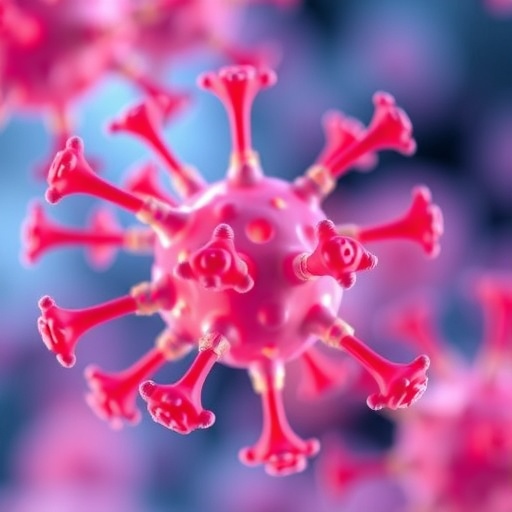In an increasingly complex world, the intersection of technology and emergency response has garnered significant attention. The application of artificial intelligence (AI) to disaster management presents opportunities that could redefine how first responders access information and mobilize resources. As disasters unfold, the urgency for quick decision-making becomes paramount; however, the incorporation of AI into such scenarios raises critical questions about ethics, accuracy, and operational reliability. Recent research, particularly from a team at Cranfield University, sheds light on these concerns by proposing a structured framework for AI-driven decision-making tailored for disaster situations.
The implications of integrating AI with unmanned aerial vehicles (UAVs) and satellite imaging technology are immense. This convergence aims to optimize emergency response efforts by generating rapid, actionable insights. While early implementations have shown promise, the inherent risks accompany the potential benefits. Errors in judgment, biases within algorithms, and the overarching concern for human safety necessitate the establishment of robust ethical standards when deploying AI in critical environments. The question looms: how do we balance the benefits of such advanced technologies with the potential for unforeseen consequences?
Cranfield University’s research team is tackling this disparity head-on by developing an advanced AI decision-making framework aimed at improving outcomes in disaster management. This innovative approach seeks to not only harness the speed and efficiency of AI but also to ensure that the systems employed are transparent and ethical. Through structured methodologies, the researchers have demonstrated that AI can outperform human operators significantly in key metrics, achieving a 39% accuracy enhancement across diverse scenarios. This advancement underlines the role of ethical AI in enabling life-saving strategies during emergencies.
Professor Argyrios Zolotas, a notable figure in the project, emphasizes the dual objectives of enhancing technological capabilities while ensuring responsible usage. The philosophy behind the research advocates for a future where AI acts as an enabler rather than a replacement for human judgment, fundamentally enhancing resilience in high-stakes situations. The focus on ethical deployment reflects a growing recognition of the potential devastation that poorly designed AI systems can wreak when lives are at stake.
Research outcomes from this initiative reveal three primary outputs that could pave the way for a new era in disaster management. The first is the development of a novel framework that aims to standardize autonomous decision-making in safety-critical scenarios. By establishing a robust foundation for responsible AI applications, this framework lays the groundwork for deploying automated systems in future emergency events. In the era of information overload, having a structured approach ensures that decision-makers can act swiftly while relying on trusted data.
Secondly, the researchers have designed an AI agent that actively utilizes the newly proposed framework. This agent is intended to facilitate enhanced decision-making processes when crises arise. Highlighting transparency and accountability, the design of the AI agent provides a clear mechanism for human operators to understand the rationale behind AI-driven decisions. In times of crisis, when lives hang in the balance, clarity and reliability in decision-making processes can make the difference between effective response and tragic failure.
The final outcome of the research centers on validating the efficacy of the AI framework through comprehensive human evaluation studies. By directly comparing the performance of the AI agent with human operators, the researchers demonstrated that the AI framework not only supported but significantly enhanced human decision-making capabilities. The findings underscore the importance of validating AI systems in real-world contexts, which ultimately fosters greater acceptance and trust in autonomous technologies within critical domains.
Ultimately, the findings of this research suggest that when properly implemented, AI can offer a stabilization factor in chaotic environments. With a 60% greater stability in decision-making processes observed, it becomes clear that AI’s structured framework brings consistency that human judgment alone may struggle to provide. The unpredictability of disaster scenarios often leads to chaotic responses; hence, a reliable framework for autonomous decision-making could derivative predefined responses that have been validated through extensive research and human feedback.
Beyond the technological advancements, the ethical considerations illustrated in the study advocate a broader dialogue among technologists, emergency responders, and policymakers. It is essential that any AI integration in high-stakes scenarios aligns with ethical standards and is subjected to ongoing scrutiny. Public transparency and collaboration among stakeholders will be crucial in developing trust in these systems. As AI capabilities continue to evolve, proactive engagement with ethical dilemmas will be necessary to ensure that technology serves humanity effectively rather than complicating response efforts.
Academics, researchers, and practitioners in the field of disaster management must pay close attention to ongoing developments in AI technology. As evidenced by the findings from Cranfield University, the potential of AI requires a careful and structured approach to unlock its full capabilities while safeguarding human interests. The challenge rests with responsible integration, as AI systems become pivotal in shaping the future of emergency management. The structured AI framework, therefore, stands as a beacon of what could be achieved through rigorous research and ethical practices.
The publication of the detailed findings in esteemed journals such as Scientific Reports signifies an important milestone in the intersection of AI and disaster management research. As public interest grows in the capabilities of AI, ongoing discourse will be essential in navigating the ethical landscape that accompanies such innovations. The research from Cranfield University exemplifies how targeted academic inquiry can respond to the pressing challenges posed by modern disasters and the increasing reliance on advanced technologies.
As we advance into an era where AI’s involvement in public safety continues to expand, it is imperative that researchers, practitioners, and the public remain vigilant in addressing ethical considerations. The implications of deploying AI for critical decision-making are profound, and as such, it becomes crucial to ensure that its applications align with our values as a society. Only through collective responsibility and commitment to ethical practices can we adequately harness AI’s potential and mitigate its risks in disaster management scenarios.
This progress towards a structured and ethically sound application of AI in crisis situations holds the promise of saving lives and enhancing recovery efforts. As agencies move towards adopting these frameworks, the broader implications of such innovations may revolutionize not only disaster responses but also other critical domains reliant on timely and accurate decision-making.
In conclusion, the research initiative led by the team at Cranfield University serves as a critical juncture in the evolving dialogue on technology and disaster management. As we navigate this new landscape, continuous collaboration between academia and practitioners will be key to developing principles that drive responsible AI use in our most vulnerable moments.
Subject of Research: The development of a structured AI decision-making framework for disaster management.
Article Title: Structured AI decision-making in disaster management.
News Publication Date: 1-Sep-2025.
Web References: https://www.nature.com/articles/s41598-025-15317-w
References: Article published in Scientific Reports.
Image Credits: Cranfield University.
Keywords
Artificial intelligence, disaster management, autonomous systems, ethical AI, decision-making frameworks.
Tags: AI in disaster managementbalancing technology benefits and risks in disaster responsebiases in AI algorithms for crisis managementenhancing situational awareness with AIethical considerations in AI decision-makingimplications of AI in humanitarian effortsintegrating AI with first respondersoptimizing emergency response with technologyrapid decision-making in emergenciessatellite imaging for disaster managementstructured frameworks for AI in emergenciesunmanned aerial vehicles in crisis response






